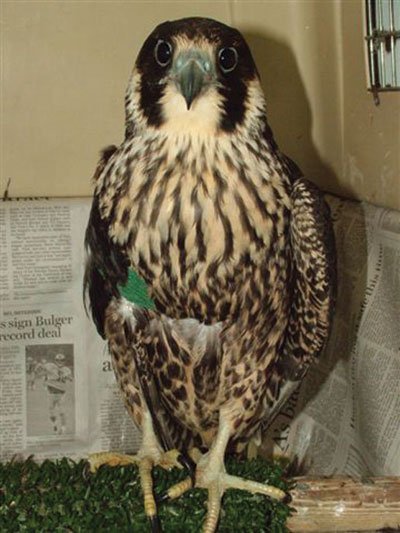If we were superstitious, we’d believe the South Valley is due
for a deluge, ala Noah’s Ark
– animals have been coming into the Wildlife Education and
Rehabilitation Center in twos for the last few months:
If we were superstitious, we’d believe the South Valley is due for a deluge, ala Noah’s Ark – animals have been coming into the Wildlife Education and Rehabilitation Center in twos for the last few months: two western screech owls, two peregrine falcons, two red-shouldered hawks, two barn owls, two great horned owls and two Anna’s hummingbirds – all unrelated. Wild creatures’ instincts for survival are challenged by the minimal amount of rain so far this year and by grass fires, which both cause a temporary loss of shade, shelter, water sources and food. WERC has received many raptors that are near death from starvation when rescued and many have been hit by vehicles while searching for food. Some of their injuries were so grievous that the only humane thing to do was to euthanize them upon arrival.
One little screech owl, just 7 inches long, was admitted to WERC in September with dried glue all over its beak. Its left foot was badly swollen and blackened with gangrene and it was unable to clench its talons. This pain was suffered because the young raptor was hungry and tried to capture a mouse that had gotten stuck in the glue trap. Its prognosis was uncertain from the beginning. Though placed on antibiotics immediately, the foot failed to heal after several weeks. Sadly, the little bird was euthanized.
The other screech owl, nicknamed “Henry,” suffered a serious head injury from colliding with a vehicle while fleeing the grass fire at Henry Coe State Park. Henry was happily released early this month.
One of the red-shouldered hawks was admitted with badly damaged wing and tail feathers from being kept in a wire cage and was severely malnourished. He will remain at WERC through the winter until new feathers have grown out; the other juvenile hawk had arrived near death from starvation, but quickly gained weight on a nutritious diet of small rodents and was released in September.
One peregrine falcon had a broken left wing and the other a broken right wing – both possibly injured due to colliding with an object while capturing bird-prey with high-speed plummeting.
Dr. Suzanne Colbert, veterinarian at Princevalle Animal Hospital in Gilroy, inserted a pin into the bone of one peregrine to aid in its healing. The falcon requires daily medication and physical therapy on its wing. Recent x-rays of both falcons show that the bones are healing well, but the birds will remain at WERC through the winter to ensure their complete health and recovery. If all goes well, they may be released after spring showers when food is again plentiful and the weather is warm.














